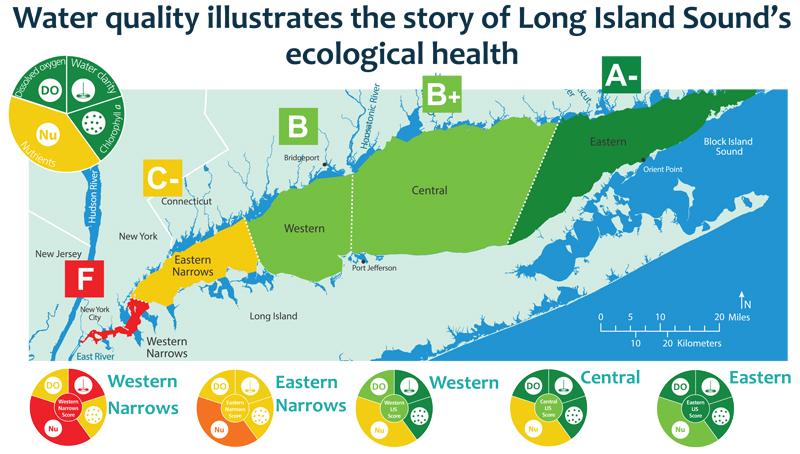Nearly 9 million people live near the waters of Long Island Sound. Grading the quality of this urban sea’s open waters paints a valuable picture of the region’s ecological health – from unhealthy waters in the Sound’s western end (an F) to improving conditions in the east (an A-).
Using data collected by scientists in 2015, our Report Card measures five water quality factors: dissolved oxygen, water clarity, chlorophyll a, and a nutrient score combining total nitrogen and total phosphorus.
See the 2016 Long Island Sound Report Card

What we’ve learned:
Long Island Sound scored poorest in the Western Narrows, where there are lots of people and not much water exchange. The Sound scored healthiest at its eastern end where populations aren’t as dense and there’s lots of tidal flushing.
While the Report Card looks at the open waters of the Sound, its bays and harbors have a critical impact on the Sound’s overall health. Future report cards will include data from our Sound-wide study of bays and harbors.
The biggest overall problem impacting the health of Long Island Sound is high levels of nutrients/nitrogen. There’s regional momentum to cut nitrogen from all the states that drain to the Sound — but we must keep it moving!
You can take action to improve Long Island Sound health:
- Reduce water usage
- Leave natural vegetation (not a lawn) along a stream, ditch, or waterway
- Pump out your septic system every 3-5 years
- Properly dispose of harmful chemicals and household grease and oil
- Eliminate or reduce fertilizer use
- Keep litter out of waterways
Visit longislandsound.ecoreportcard.org for more information.
